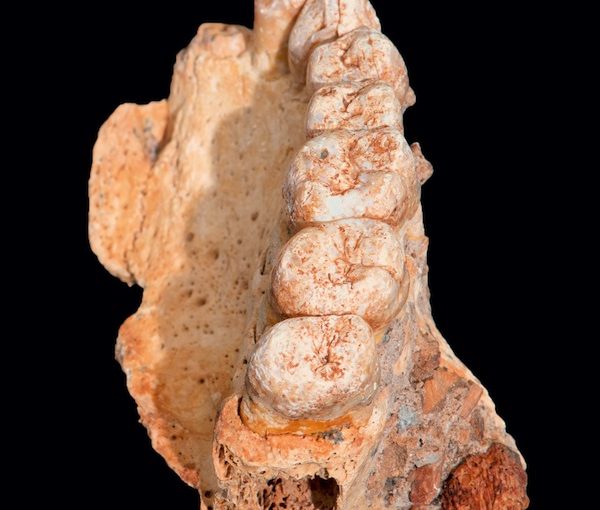A human jawbone found in the Misliya Cave on Mount Carmel near Haifa. (photo by Israel Hershkowitz, Tel Aviv University via Ashernet)
A human jawbone and other fossils found in the Misliya Cave on Mount Carmel near Haifa indicate that human migration from Africa occurred during the Ice Age, approximately 200,000 years ago, which is contrary to the popular theory that the freezing conditions and dryness of the Ice Age periods deterred human migration between continents.
These recent findings were published in the Journal of Human Evolution by Dr. Lior Weissbrod of the Israel Antiquities Authority and Prof. Mina Weinstein-Evron of the Zinman Institute of Archeology at the University of Haifa, and they build on work previously published by Weinstein-Evron and Prof. Israel Hershkowitz of Tel Aviv University in Science.
In addition to the jawbone, Weissbrod said, “The fossils now being investigated were identified as belonging to 13 different species of rodents and small insect eaters, some of which now live in high and cold regions, in the Zagros Mountains of northwestern Iran and in the Caucasus Mountains.”
This means that, “in Israel, cold conditions prevailed that allowed such animals to survive. Finding the human jawbone in the same layer where the rodent lived, suggests that these early humans survived under these conditions,” changing existing perceptions on human evolution.

